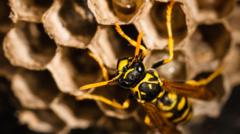The AI doll craze, fueled by generative artificial intelligence tools, has taken social media by storm. Users are enthusiastically transforming their images into mini dolls and action figures, but experts are raising alarms about the hidden costs of this playful trend.
**The Rise of AI Dolls: A Trend with Hidden Concerns**

**The Rise of AI Dolls: A Trend with Hidden Concerns**
As the popularity of AI-generated dolls surges on social media, experts warn of the environmental impact and ethical dilemmas involved.
In recent times, social media platforms are buzzing with users creating personalized miniature figures of themselves using tools such as ChatGPT and Copilot. This trending novelty allows individuals to upload their photographs with specific prompts to generate customized representations. Brands and influencers have eagerly joined the fun, yet some caution against the potential backlash stemming from the unforeseen consequences of this seemingly harmless amusement.
**How AI Doll Creation Works**
The process of crafting these dolls is straightforward, involving simple uploads and detailed requests about the final product's appearance. Users typically submit images alongside written preferences on design elements, including accessories and packaging style—often echoing well-known toy brands like Barbie. Although the results can be entertaining, the generated images do not always accurately represent the individuals involved, leading to humorous discrepancies that many users have begun to share online.
While the process can be amusing, specialists point out serious drawbacks. Generative AI technology consumes vast amounts of energy and can create outcomes that inadvertently infringe on creative copyrights. As Professor Gina Neff at Queen Mary University London puts it, these AI creations might come with hefty ecological costs, sparking discussions about sustainability in digital production.
**Concerns Over Environmental Impact and Copyrights**
Critics have flagged that the energy-intensive nature of AI technology could contribute to environmental degradation. While sharing the fun of crafted visuals, voices like Lance Ulanoff from TechRadar remind us that each meme generated could metaphorically "kill a tree." The larger degradation brought on by this trend must not be overlooked, prompting the call for a careful examination of how AI-generated content is responsibly produced and utilized.
Moreover, the debate around potential copyright infringement has emerged as a significant issue. There are fears that data used to craft these AI models could be appropriated without due permissions, creating a murky ethical landscape for creators and consumers alike.
**Navigating the Trend Wisely**
As generative AI technologies advance, analysts predict these digital trends will proliferate across social media stacks, capitalizing on the instantaneous nature of modern digital life. However, they also stress the need to maintain an ethical framework around these technologies, ensuring their growth doesn’t overshadow fundamental responsibilities toward the environment and intellectual property rights.
The rise of AI dolls may present an enticing opportunity for playful personalization, but experts warn the associated implications warrant scrutiny. Embracing advanced digital tools may indeed be a delightful escape, yet the importance of mindful engagement in the AI space remains crucial to foster a balanced future.
While engaging in AI-generated creations can be a fun distraction, as reiterated by PR agency experts, the real question looms: Are our whimsical imaginings worth the potential ramifications? Engaging with technology in a thoughtful manner could hold the key to responsible innovation as this trend evolves.
**How AI Doll Creation Works**
The process of crafting these dolls is straightforward, involving simple uploads and detailed requests about the final product's appearance. Users typically submit images alongside written preferences on design elements, including accessories and packaging style—often echoing well-known toy brands like Barbie. Although the results can be entertaining, the generated images do not always accurately represent the individuals involved, leading to humorous discrepancies that many users have begun to share online.
While the process can be amusing, specialists point out serious drawbacks. Generative AI technology consumes vast amounts of energy and can create outcomes that inadvertently infringe on creative copyrights. As Professor Gina Neff at Queen Mary University London puts it, these AI creations might come with hefty ecological costs, sparking discussions about sustainability in digital production.
**Concerns Over Environmental Impact and Copyrights**
Critics have flagged that the energy-intensive nature of AI technology could contribute to environmental degradation. While sharing the fun of crafted visuals, voices like Lance Ulanoff from TechRadar remind us that each meme generated could metaphorically "kill a tree." The larger degradation brought on by this trend must not be overlooked, prompting the call for a careful examination of how AI-generated content is responsibly produced and utilized.
Moreover, the debate around potential copyright infringement has emerged as a significant issue. There are fears that data used to craft these AI models could be appropriated without due permissions, creating a murky ethical landscape for creators and consumers alike.
**Navigating the Trend Wisely**
As generative AI technologies advance, analysts predict these digital trends will proliferate across social media stacks, capitalizing on the instantaneous nature of modern digital life. However, they also stress the need to maintain an ethical framework around these technologies, ensuring their growth doesn’t overshadow fundamental responsibilities toward the environment and intellectual property rights.
The rise of AI dolls may present an enticing opportunity for playful personalization, but experts warn the associated implications warrant scrutiny. Embracing advanced digital tools may indeed be a delightful escape, yet the importance of mindful engagement in the AI space remains crucial to foster a balanced future.
While engaging in AI-generated creations can be a fun distraction, as reiterated by PR agency experts, the real question looms: Are our whimsical imaginings worth the potential ramifications? Engaging with technology in a thoughtful manner could hold the key to responsible innovation as this trend evolves.























